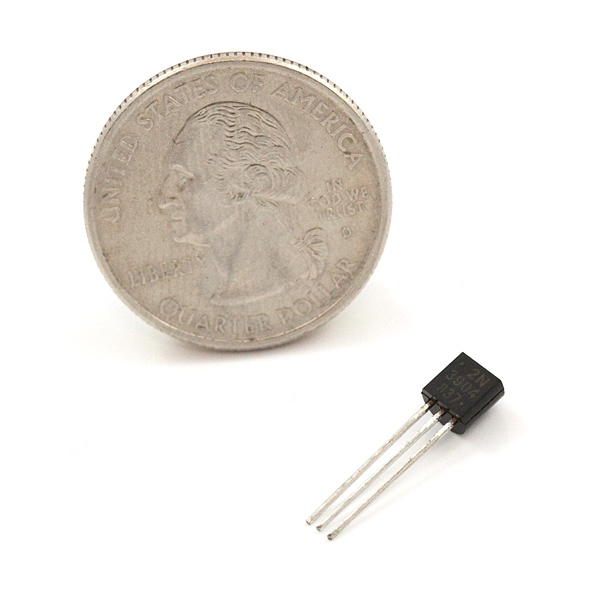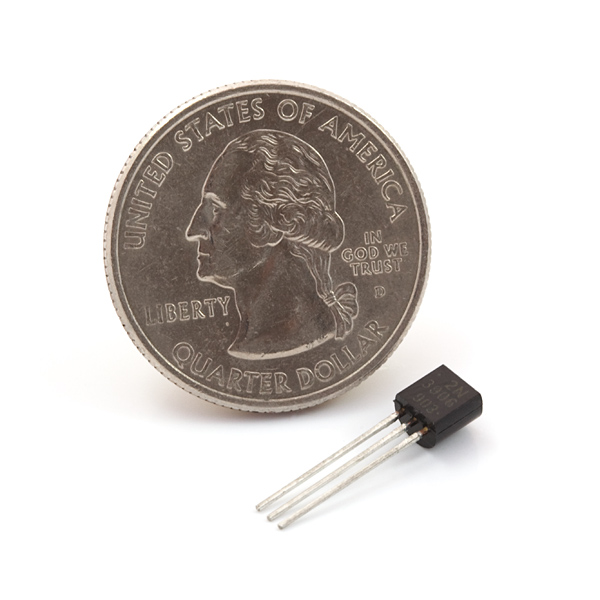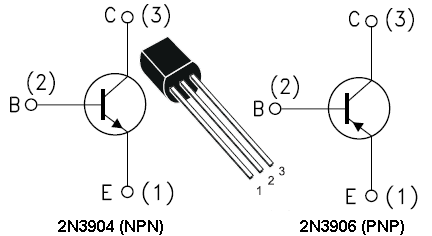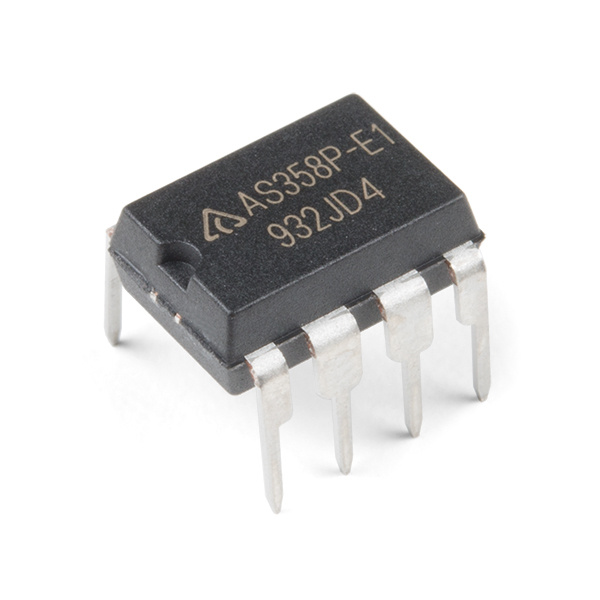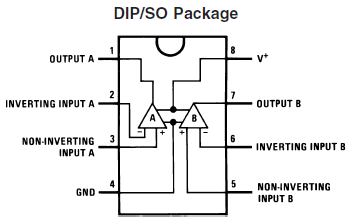Beginner Parts Kit Identification Guide
Transistors and Op-Amps
The Transistors - 2N3904 NPN and 2N3906 PNP
A distant relative of the diode, the transistors are also a semi-conductor device.
Though you probably haven't seen them, transistors have been in just about every electrical device you've ever used. The transistors included represent both types of bipolar junction transistors (BJTs), NPN and PNP, and are some of the most common transistors around.
Transistors can be thought of as electronic switches. They have three terminals: a collector, an emitter, and a base. The base acts as the control of the switch; whether it's pulled high or low controls whether current can flow from the collector to the emitter. For the NPN diode, current will flow from C to E if the base is pulled high (relative to the emitter), conversely, on the PNP transistor, the base must be pulled low relative to the emitter for current to flow from C to E.
For a much deeper read on diodes, check out our diode tutorial.
Transistors
The Op-Amps - 358
Operational amplifiers...depending on how much you love analog circuit design, these integrated circuits either conjure painful memories of ideal amplifier theory, or delightful recollections of amplifier circuit design. Fortunately, there's a lot of information out there to help you get exactly what you want out of an op-amp. Op-amps are a specifically differential voltage amplifiers, they take two voltage inputs and amplify the difference to anywhere from 10s to 1000s of times larger. They have zillions of applications; depending on the components around them they can be used to compare, invert, add, integrate, or perform all sorts of other functions on signals.
The AS358 and LM358 are good examples of a really standard op-amp. One of the 358 op-amps will be included in the kit.
Op-Amp - AS358P (Through-Hole)
COM-15946Op-Amp (Through-Hole) - LM358
COM-09456It's dual channel, meaning it's actually got two op-amps inside it. Each amp has an inverting and non-inverting input, as well as a single output. And both amps share a single voltage supply.
For more information about operational amplifiers, check out our tutorial.
